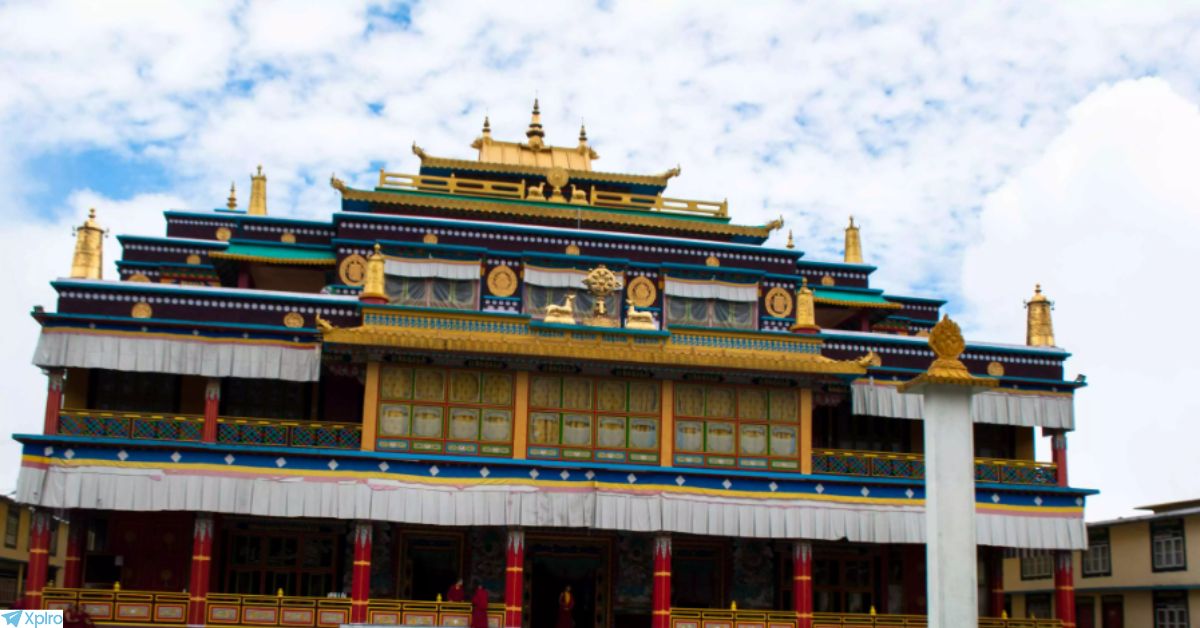Discover the Serenity and Spirituality of Rumtek Monastery: A Comprehensive Guide to Sikkim’s Sacred Gem
Nestled in the scenic hills of Sikkim, Rumtek Monastery stands as a beacon of spirituality, drawing visitors from all corners of the globe. Known for its rich history and serene ambiance, this monastery is not just a religious site but also a cultural hub. In this comprehensive guide, we’ll delve into everything you need to know about Rumtek Monastery, from its history and significance to practical tips for your visit. So, let’s embark on this journey to enlightenment together.
History of Rumtek Monastery
Rumtek Monastery, also known as the Dharmachakra Centre, is one of the most significant monasteries in Sikkim. It was originally built in the 16th century by the 9th Karmapa Wangchuk Dorje. However, it fell into ruins and was reconstructed in the 1960s by the 16th Karmapa, Rangjung Rigpe Dorje. The monastery is now the main seat of the Karma Kagyu lineage outside Tibet, making it a vital center for Tibetan Buddhism.
Architectural Marvel
Spring (March to May): Spring paints Rumtek Monastery in a vibrant palette. Pleasant temperatures, ranging from 10°C to 20°C, make sightseeing and capturing photos a delight. Blooming rhododendrons and a profusion of other flowers add a touch of magic to the landscape.
Summer (June to August): Sikkim experiences the monsoon season during summer, bringing slightly warmer temperatures (15°C to 25°C) alongside heavy rainfall. While this can lead to landslides and road closures, the lush greenery and unique charm of the season might appeal to some travelers who don’t mind the rain.
Autumn (September to November): Autumn offers another perfect window to visit Rumtek Monastery. Cool and pleasant weather (10°C to 20°C) with clear skies allows for breathtaking views of the surrounding mountains. The post-monsoon season enhances the beauty of the landscape, making it ideal for outdoor activities and exploring the monastery.
Winter (December to February): Winter transforms Rumtek Monastery into a serene wonderland. While temperatures can dip to 0°C or even lower at night (daytime ranges from 5°C to 10°C), the crisp air and potential snowfall create a magical atmosphere. Be sure to pack warm clothes if you choose to visit during this season.
Attractions:
Main Monastery Building:
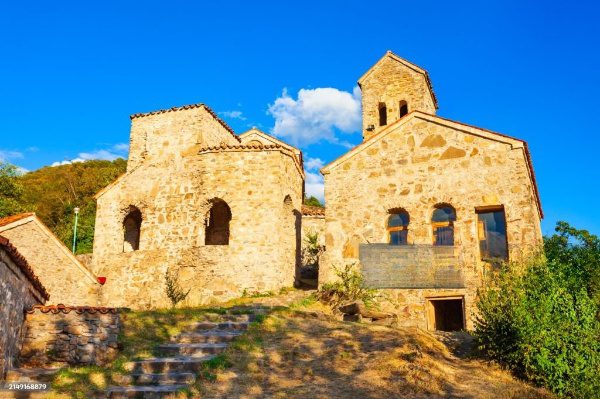
The heart of the Rumtek complex throbs within the main monastery building, also known as the Dharma Chakra Centre. Rebuilt in the 20th century by the 16th Karmapa, this architectural marvel embodies the essence of Tibetan design. Intricate murals unfurl across the walls, vibrant paintings come alive, and exquisite statues stand as silent guardians, each whispering tales of Buddhist deities and the cosmos.
Step inside, and a hushed reverence washes over you. The grand prayer hall unfolds, adorned with thangka paintings – intricate tapestries that ignite the space with a serene glow, perfect for meditation and introspection. Rows upon rows of prayer wheels line the walls, waiting for the faithful to spin them, sending silent prayers aloft.
Golden Stupa:
The heart of Rumtek beats within the main monastery building, also known as the Dharma Chakra Centre. Rebuilt in the 20th century by the 16th Karmapa, it’s a testament to Tibetan architectural mastery. Intricate murals dance across the walls, vibrant paintings thrum with life, and exquisite statues stand as silent sentinels, each whispering stories of Buddhist deities and the cosmos itself.
Step inside, and a hush falls over you, laced with reverence. The vast prayer hall unfolds before you, adorned with thangka paintings – intricate tapestries that bathe the space in a serene glow, ideal for meditation and quiet contemplation.
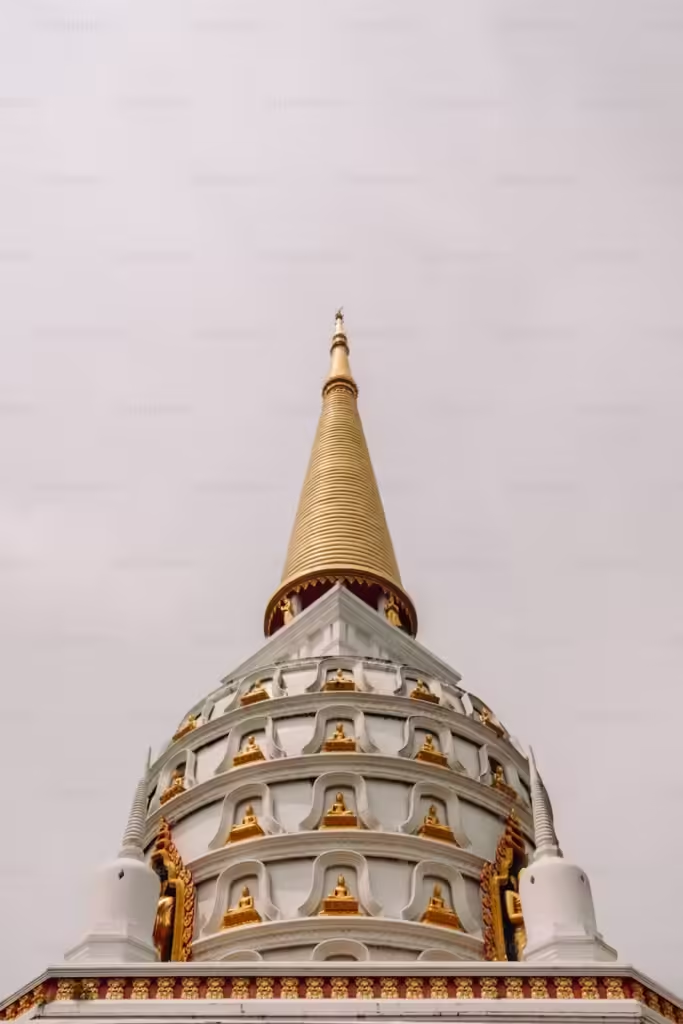
Monastic College (Shedra):
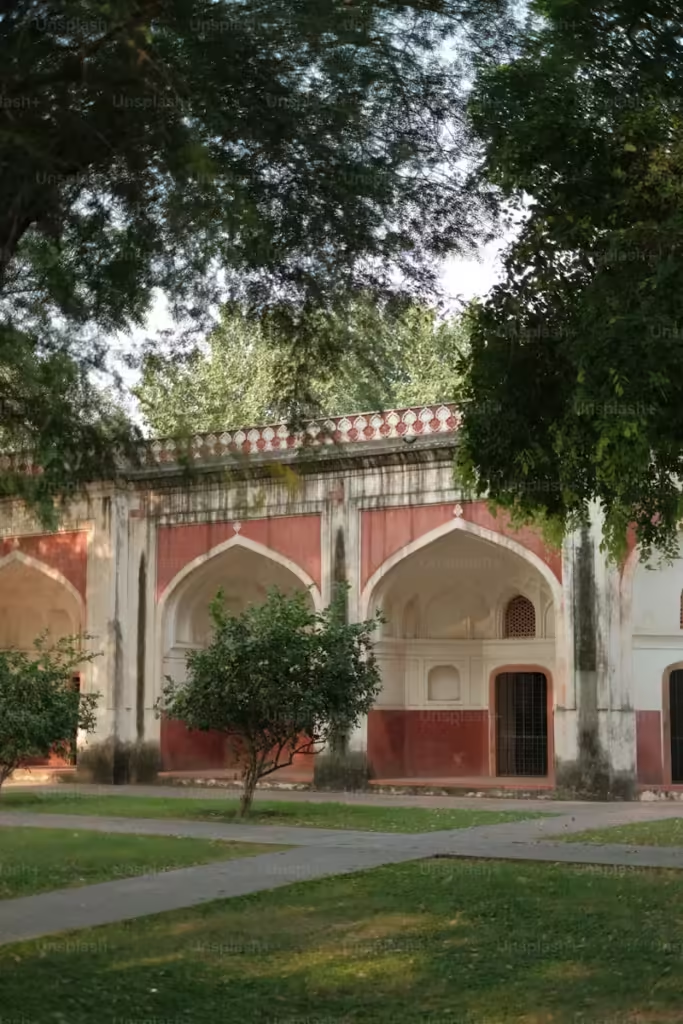
Within the walls of Rumtek Monastery lies the Shedra, the monastic college that serves as the intellectual wellspring. Here, a rigorous curriculum cultivates both academic and spiritual excellence in the resident monks. It’s a place dedicated to safeguarding the ancient wisdom of Tibetan Buddhism, ensuring its core philosophies, rituals, and practices are meticulously passed down through generations.
The monks dedicate themselves to intensive studies. Logic, metaphysics, and the sacred Buddhist texts become their daily companions, interwoven with the mastery of traditional arts like debate and meditation. Visitors to the Shedra can’t help but be drawn to the disciplined routine.
Dharma Chakra Centre:
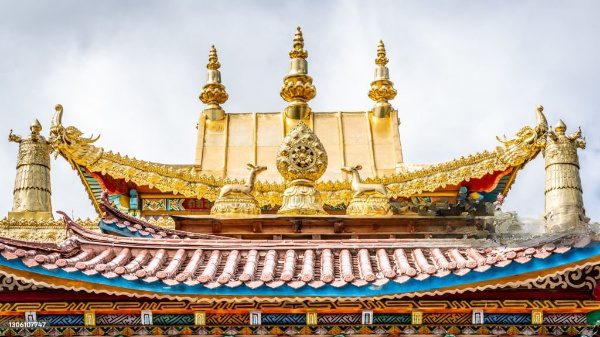
At Rumtek Monastery, the intellectual heart beats within the Shedra, the monastic college. Here, a demanding curriculum cultivates both scholarly and spiritual prowess in the resident monks. It’s a sanctuary dedicated to safeguarding the ancient wisdom of Tibetan Buddhism. Within its walls, core philosophies, rituals, and practices are meticulously passed down through generations, ensuring their survival for centuries to come.
The monks commit themselves to rigorous studies. Their days are filled with logic, metaphysics, and delving into the sacred Buddhist texts. These intellectual pursuits are interwoven with the mastery of traditional arts like debate and meditative practices.
Lingdum Monastery (Ranka Monastery):
Just a short distance, about 15 kilometers from Rumtek, lies Lingdum Monastery, also known as Ranka Monastery. It offers a serene and less crowded setting for spiritual exploration compared to its larger neighbor. This monastery serves as a beautiful testament to Sikkim’s rich Tibetan Buddhist heritage, boasting impressive architecture and a vibrant prayer hall.
Step inside the main hall, and be greeted by a visual feast. Murals, statues, and thangkas adorn the walls, each depicting various aspects of Buddhist teachings and deities. The tranquil environment fosters a perfect space for meditation and quiet contemplation.
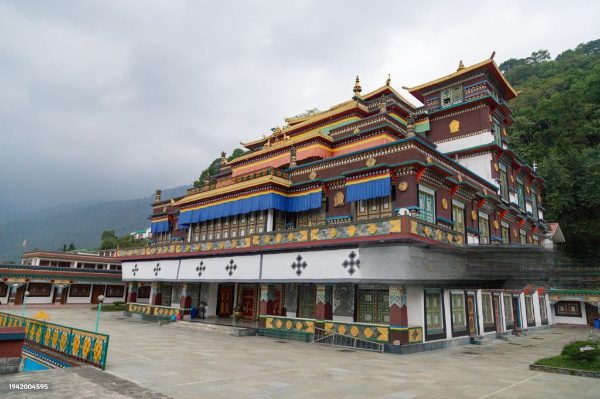
Local experiences:
- Attend a Prayer Ceremony: Witness the daily prayer rituals and chanting sessions conducted by the monks. Immerse yourself in the spiritual ambiance and gain insights into Tibetan Buddhist practices.
- Spin the Prayer Wheels: Engage in the traditional practice of spinning prayer wheels, believed to release prayers and positive energy into the universe.
- Interact with Monks: If fortunate, you might be able to have conversations with resident monks to learn about their daily routines, spiritual practices, and the teachings of Tibetan Buddhism.
- Participate in a Meditation Session: Join a meditation session led by experienced monks to experience the tranquility and mindfulness practices of the monastery.
- Attend a Buddhist Festival: If your visit coincides with a Buddhist festival such as Losar (Tibetan New Year) or the Kagyed Dance Festival, witness vibrant celebrations featuring traditional music, dance, and rituals.
- Explore the Rumtek Gardens: Stroll through the beautifully landscaped gardens, meditate, or simply relax while enjoying the serene surroundings and scenic views.
- Enjoy Local Cuisine: Sample traditional Sikkimese and Tibetan cuisine at nearby eateries or food stalls, including momos, thukpa, and butter tea.
- Shop for Souvenirs: Purchase local handicrafts, thangka paintings, prayer flags, and other souvenirs from shops around the monastery.
- Nature Walks and Hikes: Take leisurely walks or short hikes in the surrounding hills and forests to enjoy the natural beauty and tranquility of the area.
- Yoga Sessions: If offered, join a yoga session in the peaceful environment of the monastery grounds, enhancing your physical and spiritual well-being.
- Explore Nearby Attractions: Visit nearby sites such as Lingdum Monastery, Tsomgo Lake, and Hanuman Tok to further enrich your cultural and natural exploration of Sikkim.
Travel tips:
- Witness Prayer Ceremonies: Observe or participate in the daily prayer rituals and chanting sessions conducted by the monks. Gain insights into Tibetan Buddhist practices and soak in the spiritual ambiance.
- Spin the Prayer Wheels: Take part in the traditional practice of spinning prayer wheels, believed to release prayers and positive energy into the universe.
- Interact with Resident Monks: If fortunate, you might have conversations with the monks to learn about their daily routines, spiritual practices, and the teachings of Tibetan Buddhism.
- Experience Meditation: Join a meditation session led by experienced monks. Discover the tranquility and mindfulness practices that are central to life at the monastery.
- Visit the Shedra: Explore the monastic college (Shedra) and witness the rigorous academic and spiritual training undertaken by the young monks.
- Witness a Buddhist Festival: If your visit coincides with a festival like Losar (Tibetan New Year) or the Kagyed Dance Festival, immerse yourself in vibrant celebrations featuring traditional music, dance, and rituals.
- Find Peace in the Gardens: Stroll through the beautifully landscaped Rumtek Gardens. Here you can meditate, relax, or simply admire the scenic views.
Conclusion
Experience the unforgettable Rumtek Monastery in Sikkim, a treasure trove of Tibetan Buddhist heritage and architecture nestled amidst tranquil hills. Xplro.com, your travel companion, can guide your exploration. Witness monks in daily rituals and chanting, participate in spinning prayer wheels, or simply find peace in the serene gardens and breathtaking vistas. Every moment here is infused with tranquility, inviting introspection. More than just a religious center, Rumtek Monastery offers a haven for spiritual growth and cultural discovery.
FAQs
- What is Rumtek Monastery famous for?
- Rumtek Monastery is renowned as the main seat of the Karmapa Lama, head of the Karma Kagyu lineage of Tibetan Buddhism. It is celebrated for its spiritual heritage, stunning architecture, and vibrant Buddhist festivals.
- How far is Rumtek Monastery from Gangtok?
- Rumtek Monastery is approximately 24 kilometers (about 15 miles) from Gangtok, the capital city of Sikkim. The journey typically takes about 1 to 1.5 hours by road, depending on traffic conditions.
- What are the visiting hours of Rumtek Monastery?
- Rumtek Monastery is usually open to visitors from early morning until late afternoon. Visitors should verify the exact hours locally or with tour guides for updated information.
- Is there an entry fee to visit Rumtek Monastery?
- Yes, there is a nominal entry fee for visitors to Rumtek Monastery. This fee supports the upkeep and preservation of the monastery grounds and facilities.
- Can visitors take photographs inside Rumtek Monastery?
- Photography policies vary, but generally, photography is allowed in outdoor areas and some designated parts of the monastery. It is advisable to seek permission before photographing monks or during ceremonies.
- Are guided tours available at Rumtek Monastery?
- Yes, guided tours are often offered at Rumtek Monastery, providing insights into its history, architecture, and spiritual significance. Local guides or monastery staff can provide informative tours.
- What should visitors wear when visiting Rumtek Monastery?
- Visitors are encouraged to dress modestly and respectfully when visiting Rumtek Monastery. This includes covering shoulders and knees, as it is a place of religious worship and cultural importance.
- Can visitors participate in meditation sessions at Rumtek Monastery?
- Yes, visitors can often join meditation sessions led by resident monks at Rumtek Monastery. These sessions offer a chance to experience the monastery’s spiritual practices and teachings firsthand.
- What are the best months to visit Rumtek Monastery?
- The ideal times to visit Rumtek Monastery are during spring (March to May) and autumn (September to November). These seasons offer pleasant weather, clear skies, and beautiful views of the surrounding landscapes.
- Is Rumtek Monastery accessible for elderly or differently abled visitors?
- Rumtek Monastery has some accessibility challenges due to its hilly terrain and stairs. Efforts are made to accommodate visitors with mobility issues, and it’s advisable to inquire in advance for specific arrangements.
- Are there accommodations near Rumtek Monastery for overnight stays?
- Yes, there are several guesthouses, hotels, and resorts near Rumtek Monastery that offer accommodations for overnight stays. It is recommended to book in advance, especially during peak tourist seasons.
- What are some nearby attractions to visit along with Rumtek Monastery?
- Nearby attractions include Lingdum Monastery (Ranka Monastery), Tsomgo Lake, Hanuman Tok, and the city of Gangtok itself. These sites provide additional cultural, natural, and historical experiences in close proximity to Rumtek Monastery.
Explore More
Discover more about Sikkim’s rich heritage and stunning landscapes. Check out our guides on Gangtok’s top attractions, the breathtaking Nathula Pass, and the serene Tsomgo Lake. Dive into the vibrant culture, local cuisine, and hidden gems of this enchanting region. Start planning your unforgettable Sikkim adventure today at xplro.com!




